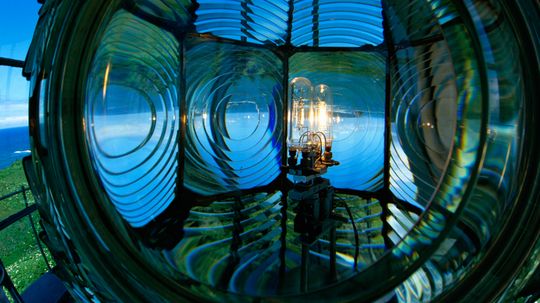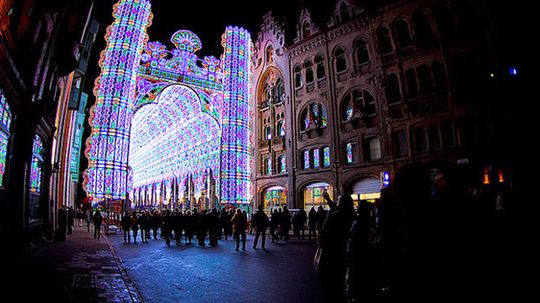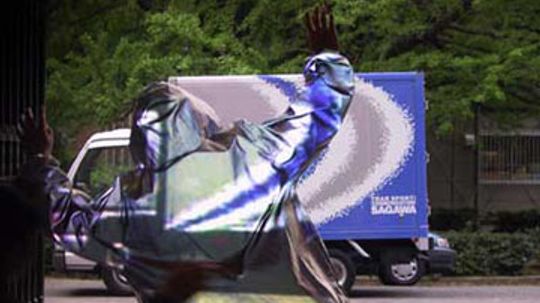Optics
Optics is the study of the properties and behavior of light. In this section you can learn about everything from holograms to lasers and lenses.

Brown Noise vs. White Noise: Which Is Best for Quality Sleep?

Can a sound wave kill you?

Can two cans and a string really be used to talk over a distance?

Strong Bases: Properties, Applications and Examples

Comparing Strong Acids and Weak Acids

What Color Is the Hottest Flame?

How Electricity Works

How Faraday Cages Work

How Gasoline Works

What do bugs have to do with forensic science?

5 Things You Didn't Know About Autopsies

Do a Person’s Fingerprints Change After Death?
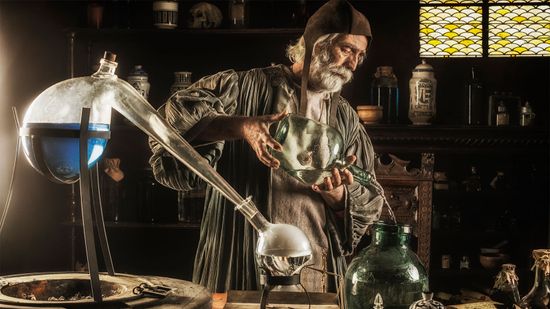
How Alchemy Paved the Way for Chemistry

How did Nikola Tesla change the way we use energy?

Time May Not Exist, Say Some Physicists and Philosophers

Why Does Ice Stick to Your Fingers?

What if I forgot to remove a piercing before an MRI?

A Kid-friendly Introduction to Magnets and Magnetism

Mean, Median, Mode: 3 Different Measures of Central Tendency

What Is the Biggest Number? 6 Astronomical Contenders

How to Use the Rate of Change Formula in Math and Physics

5 Hugely Fun Facts About Mass (Not Weight)

Antarctica's Spooky Cosmic Rays Might Shatter Physics As We Know It

Entropy: The Invisible Force That Brings Disorder to the Universe

The Demon Core: A Tale of Atomic Ambition and Tragic Fate

Half-Life Formula: Components and Applications
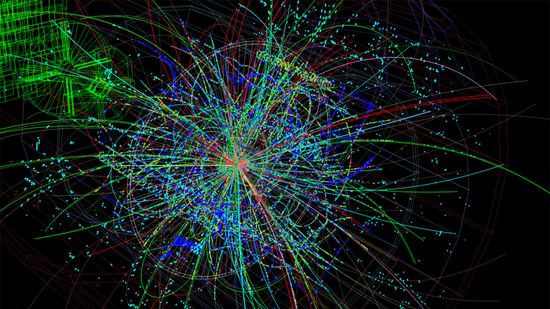
Could an 'X17 Particle' Hint at a Fifth Force in the Universe?
Learn More
The iconic "school bus yellow" was the invention of an educator named Frank Cyr. But if yellow is so good for visibility, why don't all fire trucks use it too?
By Dave Roos
It’s true: In 6 easy steps, you too can draw an impossible shape.
All colors that you see fall into the visible light spectrum. Learn about the colors in the visible light spectrum in this article.
By Sascha Bos
Advertisement
We first reported on the possibility of an invisibility cloak last year. Now a different invisibility cloak is making the news -- one that uses metamaterials to redirect light away from the wearer.
Imagine wearing a T-shirt with lettering on it while brushing your teeth. Why are the letters on the T-shirt reversed in the mirror, while your head appears right side up?
Lasers are used in dental drills, eye surgery and even tattoo removal. But what exactly is a laser? There are numerous types, but all lasers work basically the same way. Learn how they generate such concentrated beams of light.
We all have favorite colors. But have you ever considered why you like one color more than another?
Advertisement
You're driving down the road on a sunny day, and you see a puddle of water coming up. You look again and it's gone! What happened? You’ll be able to answer that question if you read our miraculous mirage article.
By Tom Harris
For centuries, curious observers have probed the heavens with the aid of telescopes. Today, both amateur and professional scopes magnify images in a variety of ways.
The human eye misses a lot -- enter the incredible world of the microscopic! Explore how a light microscope works.
Unlike the cheap microscopes you peered into in school, these advanced instruments can breathe rich detail into the tiny world around us, including the world of nanotechnology.
Advertisement
A venerable work of art hangs lifeless in a museum, the once brilliant scene dulled by centuries of dirt and grime. Can laser analysis and modern art restoration techniques save the masterpiece?
Just how far can the human eye see? There's no exact formula to figuring it out, but we do have an idea.
I have a thin piece of plastic mounted on the back window of my RV. It magnifies things so I can see better when I'm backing up. How can such a thin piece of plastic magnify things? A regular glass magnifying lens would have to be curved on both sides and much thicker.
Just about everyone has seen a television show or movie in which a criminal suspect is questioned while detectives watch from behind a one-way mirror. How does a piece of glass manage to reflect light from one side while remaining clear on the other?
Advertisement
If you want to see a hologram, you don't have to look much farther than your wallet. But the most impressive holograms are large scale and illuminated with lasers or displayed in a darkened room with carefully directed lighting. Learn how a hologram, light and your brain work together make clear, 3-D images.
Some of the brightest minds in history have focused their intellects on the subject of light. Einstein even tried to imagine riding on a beam of light. We won't get that crazy, but we will shine a light on everything scientists have found so far.
NASA's Mars rovers are sending 3-D images to Earth, so we can see depth and texture on the Martian surface. And how do we see this depth and texture? 3-D glasses, of course! Check out how they work.
An invisibility cloak seems perfectly believable in the magical world of Harry Potter, but in the real world, it's impossible, right? Not so fast.
Advertisement
Cosmological redshift: sounds like the latest blockbuster coming to a theater near you, doesn't it? In reality, it has to do with how light itself travels -- and understanding how it works is essential to advanced space telescope technology.
What if there are colors within the visible spectrum that our brains can't perceive? In fact, there are. They're called impossible colors. But some researchers think they've discovered a way to see the impossible.
By Dave Roos
The Diamond synchrotron is a massive facility that houses a beam of light 10 billion times brighter than the sun. But is that all it does?
If you're one of those people who chooses invisibility as your desired superpower, it could mean you have a dark side.
By Alia Hoyt
Advertisement
Why do we love looking at a perfectly stacked display of soup cans or six flower petals around a stamen? Our brains seem wired for it -- but why?
By Dave Roos
Primary colors are the blocks from which all other colors are built. But there's a lot more to know about them than the basic red, yellow and blue we learned about in kindergarten.













